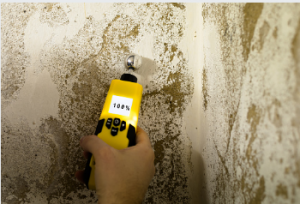There are many reasons to have a scientific instrument collection. Not only do you want to collect data about the world around you, but you also want to know how well the instruments are made. So whether you have high-tech devices or basic items, there’s a tool for your project. From simple rulers to more complex instruments, here’s what you need to get started. This article will examine the history of scientific instruments and how they helped scientists.
 A moisture meter is a tool used to measure the amount of water present in a solid. It consists of a sensor probe attached to a measurement gauge. Some are manual, while others use electronic sensors that transmit data through wires connected to a controller or radio signals. Others are built into a machine that produces a finished product. So whether you need to measure the moisture in drywall or wood, a moisture meter is your best bet.
A moisture meter is a tool used to measure the amount of water present in a solid. It consists of a sensor probe attached to a measurement gauge. Some are manual, while others use electronic sensors that transmit data through wires connected to a controller or radio signals. Others are built into a machine that produces a finished product. So whether you need to measure the moisture in drywall or wood, a moisture meter is your best bet.
Soil moisture meters. These are portable, accurate, and easy-to-use instruments that measure soil, powder, or cement moisture. They feature a simple LCD and an alarm to shut off after five minutes. It makes them a great choice for construction professionals. You can even use the meter in the field without running out and buying a new one. Once you’ve acquired your new instrument, you’ll be on your way to becoming an expert in your field.
BL Compact B. This unit is an electronic structural moisture meter that uses dielectric constant/radio frequency measurements. Another powerful tool for soil and substrate assessment is the WET Kit. The WET Kit measures three crucial plant growth factors: water content and temperature. The WET Kit is a handy, portable instrument for monitoring soil and substrate moisture. In addition, it measures the ECP (electrical conductivity) and soil pH (potency).
This instrument measures the moisture content of soil and water. It uses neutron scattering to determine the moisture content of the soil. The device is non-destructive and does not need a power source. It makes it a practical tool for any research project. It is also relatively inexpensive, lightweight, and ergonomic. These tools do not require a power source. They weigh about 267 g (0.58 lb).
Soil moisture sensors. Soil moisture sensors measure the amount of water in the soil. They are also used for detecting the moisture content of a wide variety of materials. Soil moisture meters are easy to use and affordable. They do not require batteries, and they are relatively inexpensive. They are ergonomically designed and do not require a power source. These devices are relatively simple and don’t require a power source. However, these instruments do not need a battery or an external power source, so they’re not ideal for laboratories.
A hair-based instrument was invented in 1783 by Horace-Benedict de Saussure. The hair was attached to a silver thread around the horizontal axis. Its pointer would move across a graduated dial. Eventually, a working version of the hair-based instrument was born. However, several scientific instruments were invented during this century. For example, soil moisture sensors are essential for measuring soil moisture.
Soil moisture meters are inexpensive and ergonomically designed. They can measure water and soil moisture by assessing electrical conductivity. They are also used to quickly and accurately determine the moisture content in powdered materials. They are non-destructive and can be carried from one place to another. They only require a power source. They are also ergonomically designed, inexpensive, and do not require a power source. They are simple and inexpensive.
Despite the various scientific instruments, only a few can be used in the field. For example, a soil moisture meter is a type of soil moisture meter. This instrument works by measuring water content in soil or rock. The sensor measures electric conductivity and is ergonomically designed. Therefore, a soil moisture meter is an instrument that is highly sensitive to various environmental factors. In addition, this instrument is non-destructive and does not require a power source.
Soil moisture meters are often used to measure the moisture content of the soil. They can be handheld, but they do not require a power source. However, soil moisture meter units also need a power source. This type of instrument requires a voltmeter to measure the amount of water in the soil. On the other hand, a voltage meter does not require a power source. In contrast, a current-voltage metre is a low-voltage device.
